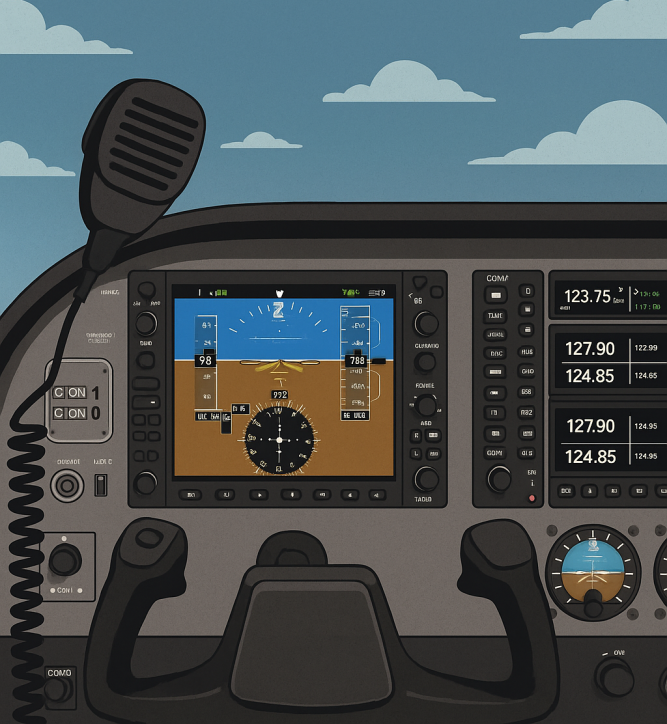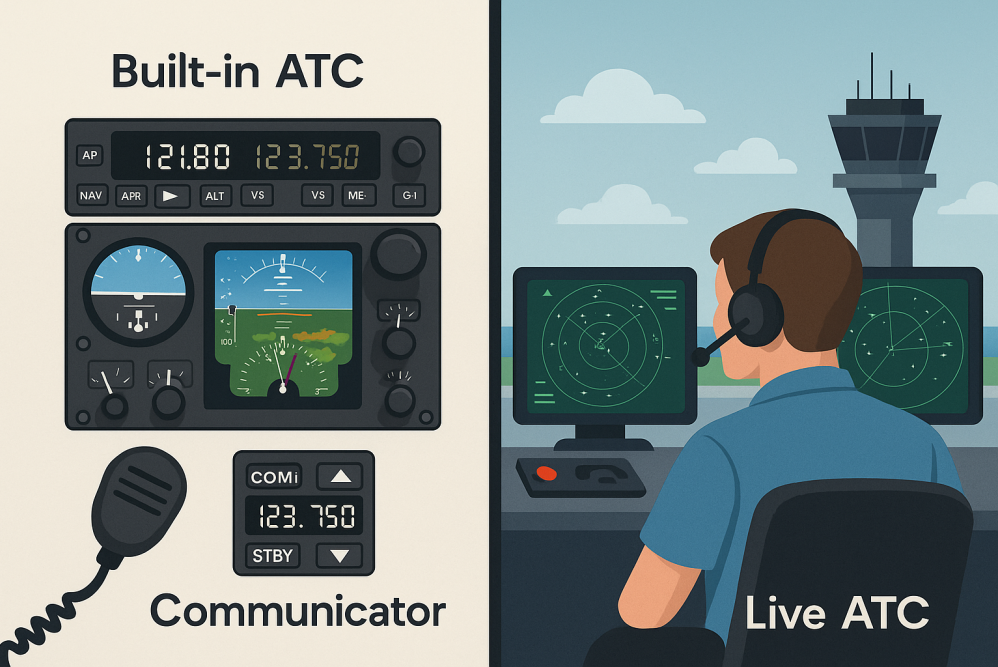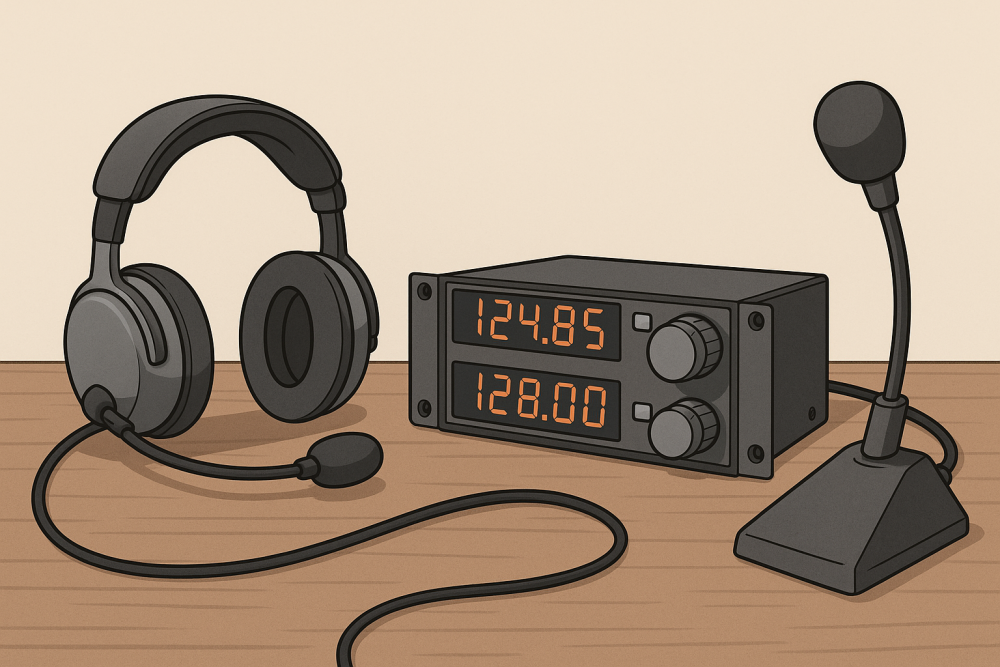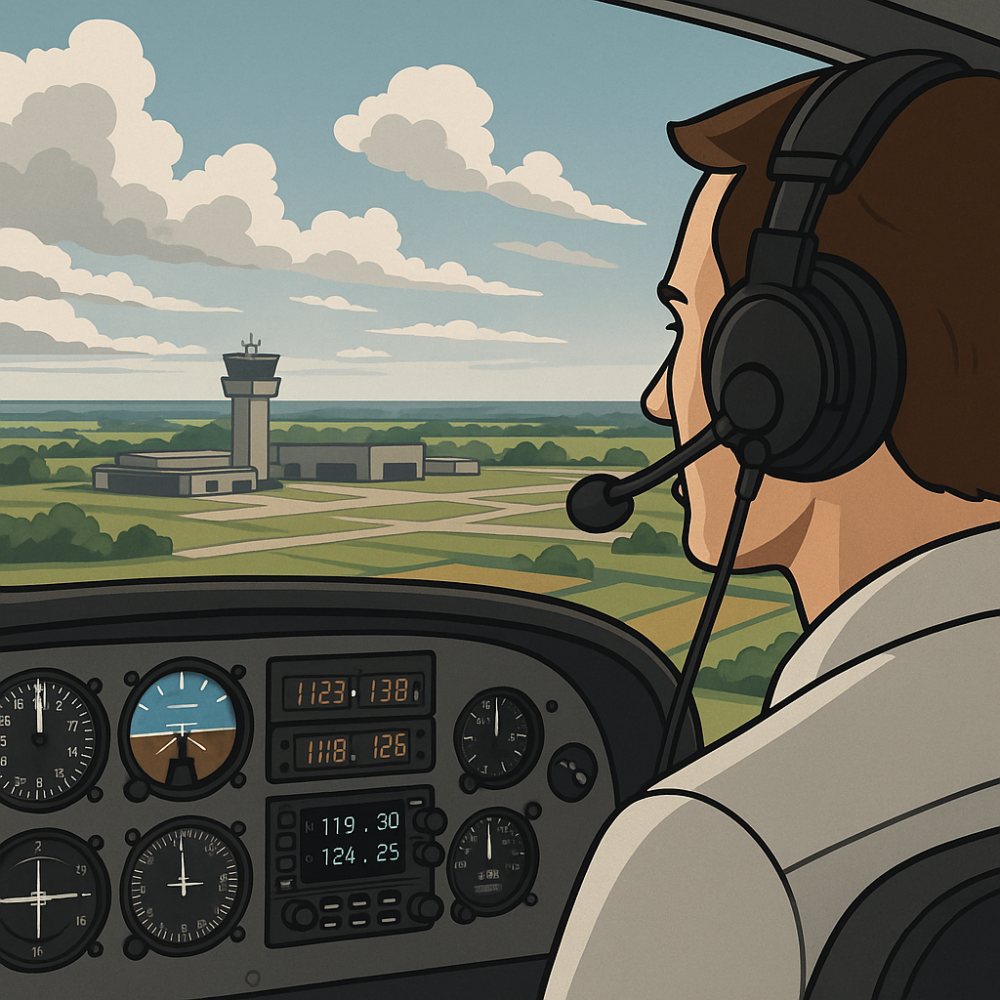Last updated on September 5th, 2025 at 11:24 pm

Implementing ATC in your flight sim isn’t just about ticking a realism box—it’s about stepping into the mindset of a real pilot. For a deeper sense of realism in your entire setup, check out Achieving Ultimate Realism With Custom Equipment. Suddenly, those once-quiet skies come alive with instructions, decisions, and a rhythm that mirrors actual aviation.
When you integrate ATC communication, you’re not just practicing takeoffs and landings; you’re getting a taste of real aviation processes like picking up clearances, understanding taxi instructions, and navigating landing sequences. This level of immersion forces you to think, plan, and respond as a real pilot would.
Adding ATC enriches your flying experience by mimicking the structured environment of actual airspaces. This means your flights have a sense of purpose and direction, driven by the necessity to follow procedures and make informed decisions.
Once you start speaking ATC fluently, your sim flights feel more focused and purposeful. Each clearance or instruction adds a little twist—sometimes a challenge, sometimes a “nailed it” moment—and keeps you mentally tuned in from takeoff to touchdown. It’s about stepping into a pilot’s shoes and carrying out the responsibilities that come with it.
By embracing ATC communication in your simulator, you’re not just gaming—you’re training to think like a pilot. This is your chance to add depth to your flights and prepare for more advanced virtual skies. It’s all about building the essential skills that make flying both challenging and rewarding.
Choosing the Right ATC Simulation: Built-In vs. Real-World

Most flight sims like Microsoft Flight Simulator and X-Plane come with built-in ATC systems. If you’re still deciding which sim suits you best, see Choosing the Right Flight Simulator for Your Needs. These can be a great starting point for beginners, offering a basic understanding of aviation communication. But for those craving a slice of realism that’s a touch closer to the skies above us, live ATC networks could be your next frontier.
VATSIM, PilotEdge, and IVAO—all live ATC networks—provide a thrilling opportunity to communicate with real human controllers and interact with other pilots. These platforms turn up the notch on realism, offering a more immersive and intense experience than your standard sim default settings. If you’d like to learn more about the tools and software that make these networks possible, check out our guide on Top Software for Air Traffic Control Simulation.
Using real-world simulation tools means you’re not only practicing your routines but also exposing yourself to the unexpected challenges and variables that come with flying. It’s where the human element makes every flight unique, adding an exciting unpredictability.
The choice between sticking with built-in ATC or jumping into live networks depends on your comfort level and what you’re seeking from your simulator sessions. If you thrive on spontaneous interactions and want to test your skills in dynamic environments, these real-world platforms could be the challenge you need.
Remember, the learning curve can be steep, but that’s part of the fun. The more realistic your simulation, the more rewarding it feels when things go right. Whether you’re just starting or looking to elevate your flying experience, each option offers unique benefits. Just make sure to choose what’s best for your current skill level and future aspirations.
What You’ll Need for Realistic ATC Communication

Having the right gear can make a world of difference when communicating over ATC in your flight sim. You can explore recommended headsets in our article: Top 5 Headsets for Fully Immersive Flight Simulation. A good headset equipped with a noise-canceling microphone isn’t just about comfortable listening—it’s about being heard clearly, especially when you’re tuned into live ATC networks where clear two-way communication is key.
PilotMall’s guide to premium aviation headsets provides a great overview of noise‑canceling ANR headsets like the Bose A30 or Lightspeed Zulu 3, which are excellent choices for clean, crisp audio.
Besides your basic equipment, consider investing in dedicated ATC panels if you’re serious about upping your simulation game. These panels mimic the look and feel of an aircraft’s radio stack, letting you physically turn knobs and scroll through frequencies. It’s a tactile experience that ups the realism and makes frequency management more intuitive.
Quality equipment isn’t just about adding realism; it’s also about making the entire experience smoother and more enjoyable. Distortion-free audio ensures you won’t miss important instructions and minimizes the frustration that can come from unclear comms, especially during busy approaches or departure procedures.
Look for comfort and quality when choosing your setups. You’ll be spending a lot of time using this equipment, so make choices that won’t leave you regretting after a long-haul flight. And if you’re working with a budget, prioritize getting a dependable headset first, then add specialized equipment as you grow more confident and skilled.
Mastering ATC Phraseology and Community Resources
Getting the hang of ATC lingo can be a game-changer when flying online. Knowing the right phraseology not only makes you sound professional but also helps ensure clear communication. Every pilot worth their salt will tell you that understanding the bits and bobs of ATC language is crucial for seamless interactions.
The awesome part is, there’s a wealth of resources out there to help you learn. Luckily, the flight sim community has your back. The ICAO Standard Phraseology Reference Guide (PDF) offers clear explanations of key terms used in controlled airspace communicatioYou’ll find plenty of cheat sheets, quick guides, and walk-through videos that break down the jargon into friendly, no-stress learning chunks—even if you’re brand new to ATC talk.
The AOPA “Learning the Right Words” pilot guide recommends starting with the FAA’s Aeronautical Information Manual (AIM), which details essential radio communications and phraseology
Before jumping into live communications, take some time to practice offline. Not sure where to start? Try the tips in Building Confidence: Your First Virtual Takeoff and Landing. Flying solo and reading scripted ATC instructions aloud can boost your confidence significantly. You’ll be able to internalize the phrases and anticipate the flow of conversation, which makes the transition to live scenarios much smoother.
Consider joining virtual flying communities where experienced pilots and controllers are willing to help. Engaging with these communities is a great way to pick up tips, tricks, and best practices. It’s a welcoming environment where you can ask questions and share experiences, helping each other grow.
Mastering ATC phraseology isn’t just about memorizing words; it’s about understanding context and being able to respond accurately. This skill can make your virtual flights exponentially more immersive and enjoyable, so it’s worth investing the time to get it right.
Why ATC Makes Every Flight Feel Like a Real Mission

Including ATC communication in your flight sim isn’t just about adding realism—it’s about transforming your virtual flights into meaningful missions. With ATC, each flight starts with planning your route and filing a flight plan. This additional layer of responsibility enhances your strategic thinking and decision-making skills.
Engaging with ATC networks introduces you to real-time problem-solving and situational awareness. As you learn to follow instructions and respond quickly to changing scenarios, your ability to adapt in dynamic environments improves. This skillset mirrors the challenges faced by real pilots, offering a satisfying sense of achievement when you safely reach your destination.
Many simulated airports support ATIS frequencies, offering information on weather, runway conditions, and clearance details. Tuning in to these updates adds tremendous depth to your flights, replicating the pre-flight prep and in-flight adjustments that pilots undertake every day.
Learning ATC comms is full of little wins—like the first time you request clearance without stumbling or handle a frequency handoff like a pro. Each smooth flight feels like a personal milestone, and that’s what makes it addicting. The thrill you get from completing a flight with live ATC, navigating through takeoff, en-route changes, and landing is truly exhilarating.
Implementing ATC communication ultimately makes you a more thoughtful, prepared, and skilled flight sim enthusiast. If you’re ready to explore the best tools to support this experience, check out our guide to the Top Software For Air Traffic Control Simulation to find the perfect match for your setup. Pair this with system optimization tips from How to Optimize Your PC for Performance in Flight Simulators. It transforms how you engage with your simulator, giving you a taste of the airborne adventures you dream about. Whether you’re grooming your skills for real-world flying or keeping your hobby fulfilling and educational, ATC comms can elevate your virtual sky explorations to a whole new level.
🛬 Wrapping Up
Implementing ATC communication into your flight simulator isn’t just an upgrade—it’s a mindset shift. Whether you’re fine-tuning phraseology, choosing between built-in or live networks, or just getting used to the rhythm of controller chatter, you’re stepping closer to the way real pilots fly. It might feel overwhelming at first, but each small win—like a smooth handoff or successful flight plan—makes the journey incredibly rewarding. Keep practicing, stay curious, and remember: every frequency you tune into is one more step toward mastering the virtual skies.
